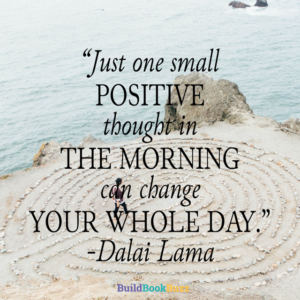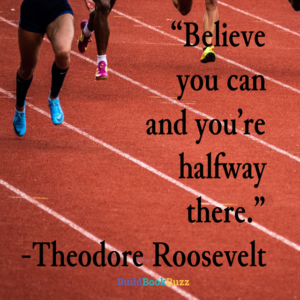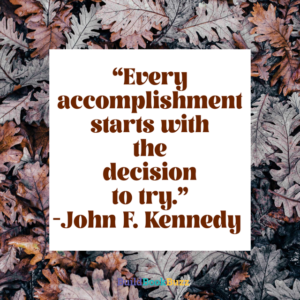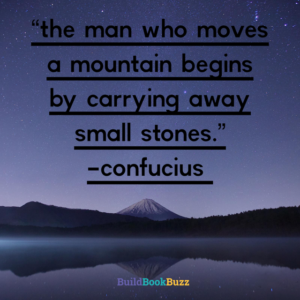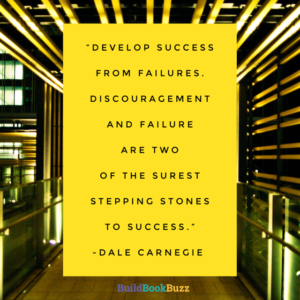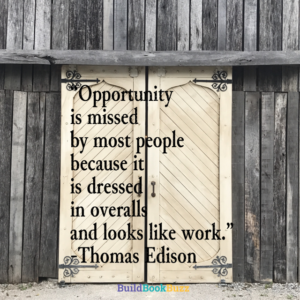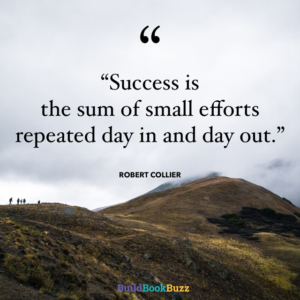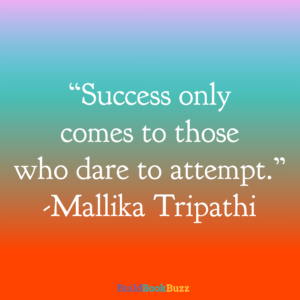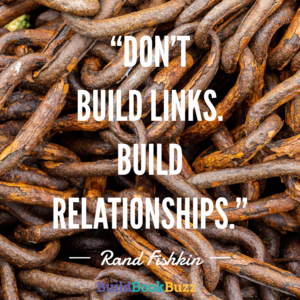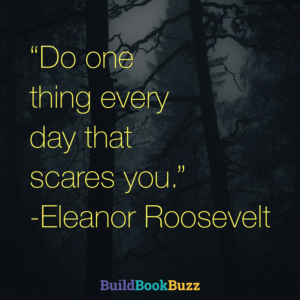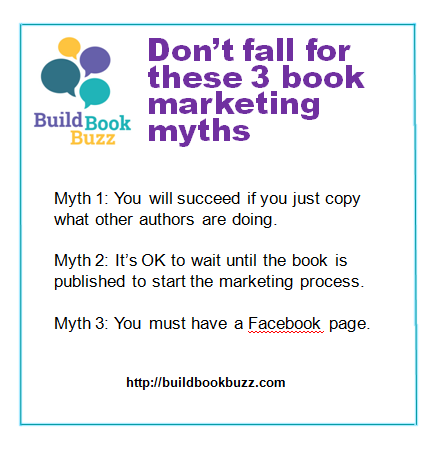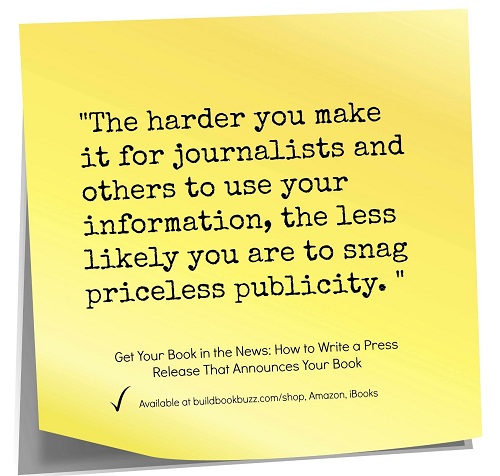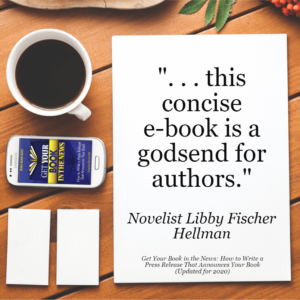There’s an unsettling trend among authors and other small business owners with something to promote: self-quoting in social media images.
I realize that many view self-quoting as a great way to assert authority and attract attention. But doing so can backfire if it creates a negative impression.
There’s a fine line between showcasing your talent and coming off as arrogant. And it’s hard for readers to warm up to arrogance.
Many view self-quoting as a great way to assert authority and attract attention. But doing so can backfire.Click to tweetWhat is self-quoting?
For those who haven’t seen this practice, self-quoting refers to how people combine a statement they’ve made (or made up) that they think is profound, wise, or insightful with a background image.
The statement is positioned with quotation marks, of course. The self-quoter’s name is included as attribution. Here’s a tongue-in-cheek example.
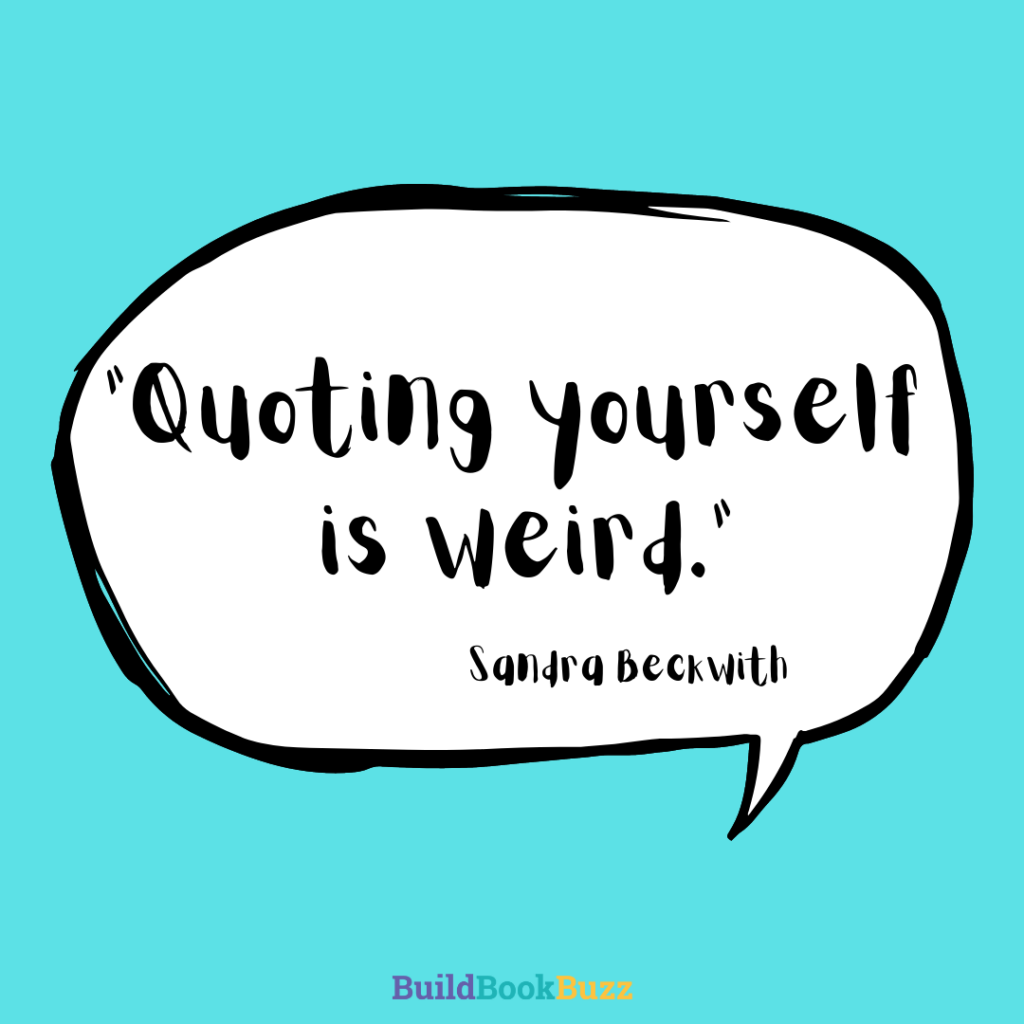
People typically do this for two reasons:
- To call attention to their expertise
- To encourage others to share the image so that the wisdom in the quote reaches more people
What many who do this don’t realize, though, is that when they continuously quote themselves, they begin to look self-involved. Where’s the humility?
Readers who aren’t impressed with the ongoing self-quotations won’t engage with the content and will instead move on to someone who seems less arrogant.
Who decides what’s quotable, anyway?
It’s not just about turning off readers, though. There’s another thing to consider.
It’s about who should decide who and what is quotable.
I’m not quotable because I say I am. I’m quotable because you decide that I am.
I’m not quotable because I say I am. I’m quotable because you decide that I am.Click to tweetI don’t get to decide what I write or say that is so meaningful that more people need to know about it. You do.
Most authors like you and me write to educate, entertain, or inform. We might want to teach something. Or maybe change opinions. Or to help people escape from reality, one page at a time.
If we write something noteworthy in our books … if we say something fascinating in a workshop or podcast … if we share unusual wisdom in blog articles or social media posts … we can’t declare it noteworthy, fascinating, or wise. Only our readers and connections can.
It’s not our decision to make about ourselves.
What works better than quoting yourself in social media images?
Here are a few strategies that offer a better “look” and outcome.
1. Genuinely engage with your audience.
Readers are drawn to genuine, relatable voices that resonate with their own experiences and emotions. This connection builds trust.
It’s about authenticity, not ego-focused promotion. (However, for some, ego-focused promotion is authentic.) It’s about being open to discussions, feedback, and idea-sharing.
It’s about sharing a bit of yourself, rather than quoting yourself.
One of the best examples I’ve seen of this recently was novelist Jennifer Weiner’s Instagram post offering to buy Girl Scout cookies from as many of her followers’ Scouts as possible.
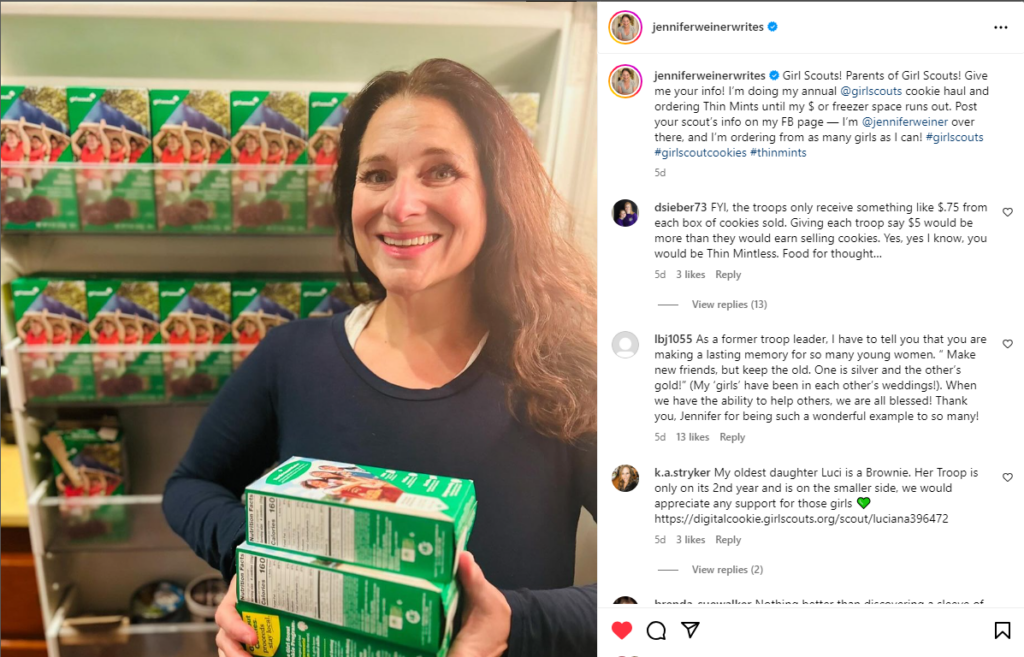
Anybody who likes Thin Mints®, was a Scout, or is the parent of a Scout, will relate.
2. Support other authors.
Rather than quote yourself, quote other authors. (Keep reading for a tool that will help you do that.)
Support those you trust and respect. Share statements they’ve made that have moved you or that could make a difference for others.
When you showcase and promote your peers or role models, you’ll not only help them reach more people with their messages, you’ll make a statement about yourself.
One person who does this as well as anyone I know is children’s book author Vivian Kirkfield. On her blog and social media accounts, Vivian shares cover reveals and hosts virtual book tour Q&As for other children’s book authors, among other things.
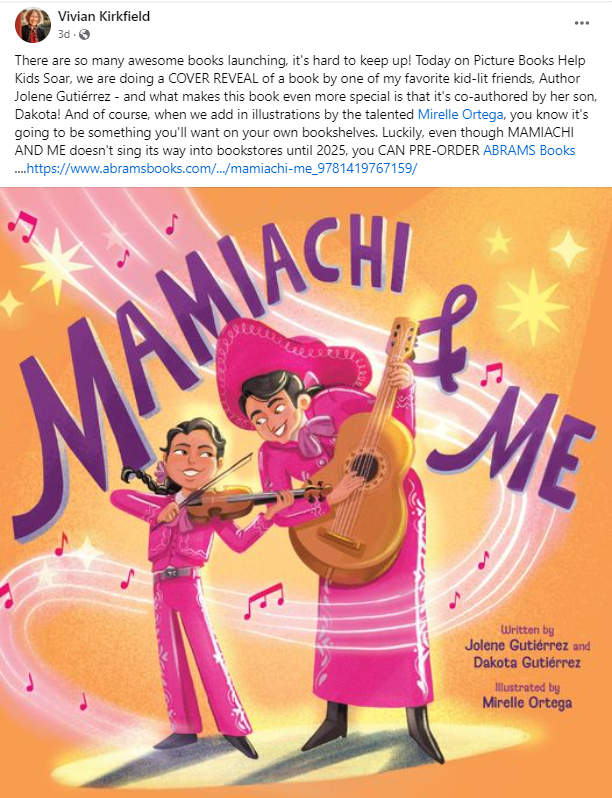
(And she never quotes herself in social graphics.)
3. Share value-added content.
Offer content that educates, entertains, or inspires readers.
If you write nonfiction, this might be how-to content. Fiction writers can share writing advice or provide a behind-the-scenes peek into where the creativity happens.
4. Find your humble self.
Most authors are humble. If anything, most are the opposite of braggadocious or self-absorbed.
Even many of those I know who quote themselves aren’t doing it because they have over-enlarged egos that could benefit from surgical reduction. They simply think that this is a way to position themselves as experts.
I hope I’ve debunked that myth today.
So show that humility. Be your authentic self. Share personal stories, passions, or struggles. In other words, be genuinely likable for who you are, not who you are posing as.
Authenticity creates connections and encourages trust. Readers instinctively support people they like and trust.
5. Be grateful.
I realize that this could sound like a command. It’s not. I’m simply encouraging you and me to pause regularly to appreciate the support we receive from readers, followers, reviewers, and other authors.
Where would we be without these people? Let’s thank them on occasion, or give them a gift. A new short story, a worksheet, or a cheat sheet are just a few examples of how to do that.
Who can you quote instead of yourself?
I hope I’ve convinced you that quoting yourself in social media images isn’t in your best interest.
Quoting someone else is, though.
So, who can you quote?
Here’s a challenge for anyone looking for more ways to engage their readers online: Today, identify three authors you admire or want to support and find something they’ve written that you can use in a “quote graphic.”
I’ve created a super-simple form you can use for this (and thanks to a new free tool I’ve discovered, I even set it up so you can type into it!). Download it here.
Once you’ve identified the quotes you’ll share, follow the instructions (with tools) for creating those images in my article, “How to create book promotion quote graphics that help you sell.”
Focus on book promotion, not self-promotion
Quoting yourself in social media images crosses that line that separates book promotion from self-promotion.
Quoting yourself in social media images crosses that line that separates book promotion from self-promotion.Click to tweetWhile a certain amount of self-promotion is necessary to help sell books, especially with nonfiction authors, you can do that without coming across as boastful.
In addition, by keeping the focus on your book rather than yourself, you won’t have to consider how your intentions might be misunderstood or misinterpreted.
Find that balance between showcasing your expertise and appealing to your target audience so you develop meaningful connections and build the positive reputation you’ve earned.
What author behavior do you see on social media that gives you pause? Please tell us about it in a comment.
]]>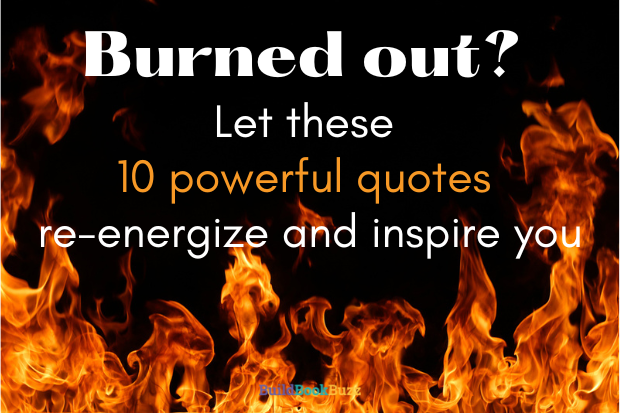 Are you feeling just as burned out as I am right now? It seems like my mojo went on vacation and decided not to return.
When this happens (not the first time, ya know?), I look for inspiration in the words of others. I search online for the pep talk – the "go get 'em!" words – that I need to restore my focus and energy level.
Here are 10 powerful quotes that are helping me get my balance back. If you need a little help right now, too, they might inspire you in the same way.]]>
Are you feeling just as burned out as I am right now? It seems like my mojo went on vacation and decided not to return.
When this happens (not the first time, ya know?), I look for inspiration in the words of others. I search online for the pep talk – the "go get 'em!" words – that I need to restore my focus and energy level.
Here are 10 powerful quotes that are helping me get my balance back. If you need a little help right now, too, they might inspire you in the same way.]]>Are you feeling just as burned out as I am right now? It seems like my mojo went on vacation and decided not to return.
When this happens (not the first time, ya know?), I look for inspiration in the words of others. I search online for the pep talk – the “go get ’em!” words – that I need to restore my focus and energy level.
Here are 10 powerful quotes that are helping me get my balance back. If you need a little help right now, too, they might inspire you in the same way.
10 powerful quotes
These motivational, just-do-it messages are from sources as diverse as Confucius and Thomas Edison.
Want to save and share any of them? Right click on the image, then select “save image as” in the dropdown menu.
“Believe you can and you’re halfway there.” ~ Theodore RooseveltClick to tweet
“Every accomplishment starts with the decision to try.” ~ John F. KennedyClick to tweet
“The man who moves a mountain begins by carrying away small stones.” ~ ConfuciusClick to tweet
“Success is the sum of small efforts repeated day in and day out.” ~ Robert CollierClick to tweet
“You will never plough a field if you only turn it over in your mind.” ~ Irish proverbClick to tweet
“Success only comes to those who dare to attempt.” ~ Mallika TripathiClick to tweet
“What we fear doing most is usually what we most need to do.” ~ Ralph Waldo EmersonClick to tweet
Create your own quote graphics
Want to create similar images with your favorite quotes?
To create these 10 images, I used the premium version of the WordSwag smartphone app ($3.99). It’s available in both iOS and Android versions.
I used the app exclusively for these, searching WordSwag’s extensive database of images to find one with just the right mood or setting for each quote. It’s a versatile, easy-to-use tool for creating image quotes to share on social media or elsewhere.
What’s your favorite motivational or inspirational quote? Please drop it in a comment so we can all appreciate it.
]]>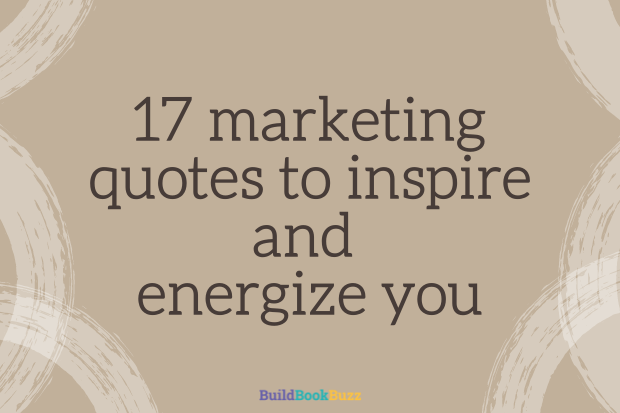 Book marketing takes energy. It takes effort. It takes knowledge.
And sometimes, to get things rolling, it takes a little inspiration, too.
Here are some of my favorite marketing quotes to inspire and motivate you to push forward and make things happen.]]>
Book marketing takes energy. It takes effort. It takes knowledge.
And sometimes, to get things rolling, it takes a little inspiration, too.
Here are some of my favorite marketing quotes to inspire and motivate you to push forward and make things happen.]]>And sometimes, to get things rolling, it takes a little inspiration, too.
Here are some of my favorite marketing quotes to inspire and motivate you to push forward and make things happen.
Which of these marketing quotes speaks to you?
Do a few of these messages resonate with you? Turn them into quote graphics to share on social media. I used the smartphone app WordSwag to create the three I created here.
“If your dreams don’t scare you, they’re not big enough.” — Ellen Johnson Sirleaf
“By definition, remarkable things get remarked upon.” — Seth Godin
“Behind every tweet, share and purchase, there is a person. Care more about the person and less about the share.” — Shafqat Islam
“Content, in all its forms, is the single most critical element of any marketing campaign.” — Rebecca Lieb
“Don’t build links. Build relationships.” — Rand Fishkin
“It’s hard to target a message to a generic 35-year-old middle-class working mother of two. It’s much easier to target a message to Jennifer, who has two children under four, works as a paralegal, and is always looking for quick but healthy dinners and ways to spend more time with her kids and less time on housework.” — Elizabeth Gardner
“Speak to your audience in their language about what’s in their heart.” — Jonathan Lister
“Spending energy to understand the audience and carefully crafting a message that resonates with them means making a commitment of time and discipline to the process.” — Nancy Duarte
“A year from now, you’ll wish you had started today.” — Karen Lamb
“Marketing’s job is never done. It’s about perpetual motion. We must continue to innovate every day.” — Beth Comstock
“Your talent determines what you can do. Your motivation determines how much you are willing to do. Your attitude determines how well you do it.” — Lou Holtz
“If you aim at nothing, you will hit it every time.” — Zig Ziglar
“Think big and don’t listen to people who tell you it can’t be done. Life’s too short to think small.” — Tim Ferriss
“It’s important to be where your audience of potential customers is today, and where they might be tomorrow.” — Andrew Delaney
“Do one thing every day that scares you.” — Eleanor Roosevelt
“Our head of social media is the customer.” — McDonald’s
“Don’t use social media to impress people; use it to impact people.” — Dave Willis
There’s a lot of marketing wisdom here that can be useful to your book marketing plan. What? You don’t have one? Download my free Book Marketing Plan Template, read the instructions and examples, and start working on yours now.
Did any of these quotes make you see book marketing a little differently? Tell us about it in a comment.
]]>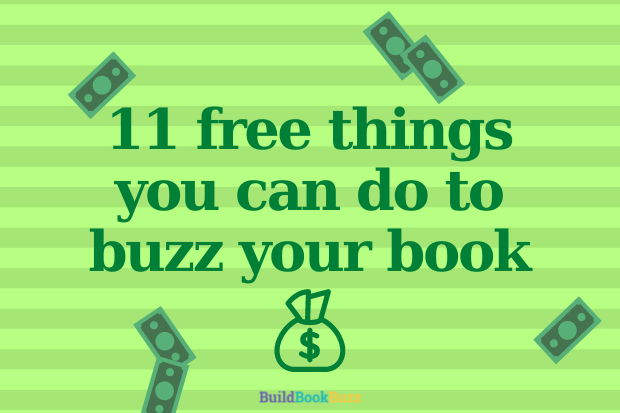 After paying for a snazzy cover design, editing, and proofreading, self-published authors don't always have a lot of money for book marketing and promotion.
And many traditionally published authors aren't earning the advances they used to, either. In the past, they could invest those funds in marketing. Now? Not so much.
Still, there’s a lot you can do to buzz your book that won’t cost you anything but time – and not much of that, either!
Here are 11 ideas to get you started.]]>
After paying for a snazzy cover design, editing, and proofreading, self-published authors don't always have a lot of money for book marketing and promotion.
And many traditionally published authors aren't earning the advances they used to, either. In the past, they could invest those funds in marketing. Now? Not so much.
Still, there’s a lot you can do to buzz your book that won’t cost you anything but time – and not much of that, either!
Here are 11 ideas to get you started.]]>And many traditionally published authors aren’t earning the advances they used to, either. In the past, they could invest those funds in marketing. Now? Not so much.
Still, there’s a lot you can do to buzz your book that won’t cost you anything but time – and not much of that, either!
Here are 11 ideas to get you started.
1. Create a holiday linked to your book’s topic.
Submit it for publication in “Chase’s Calendar of Events.” Promote it each year with a press release announcing how you and others are celebrating the occasion.
One of my favorite examples is parenting author’s Jen Singer’s “Please Take My Children to Work Day.”
Jen created this years ago when her sons were little. She got a lot of mileage out of this clever twist on an old favorite because she promoted it so well.
2. Become a podcast guest.
Podcasts are basically web-based audio programs built around specific topics, from health and wellness to books and true crime. No matter how niche or esoteric your topic or expertise, you’ll probably be able to find a podcast for it.
Search for podcasts about your topic, then review each program’s website to see if it uses guests. After you narrow down your list to those that do, listen to several episodes of each so you’re familiar with each show’s content and how it’s presented.
Before emailing the producer or host to offer yourself as a guest, Google “how to pitch podcasts” so you’re aware of best practices.
3. Comment on blogs.
Set up a Google Alert for your topic so you know when others are talking about it online.
When you comment on a blog post, provide value in a non-promotional way. You can include your book title in your signature; most blogging platforms ask you to provide a URL in the comment form.
For more on how to comment effectively, read “How to comment on blogs.”
4. Write an op-ed or essay linked to your book’s topic.
An op-ed is an opinion article that typically advocates or educates. Because they’re opinion pieces with a stated bias rather than reported stories, they go in a section of the newspaper that’s set aside for opinions. This is usually alongside the letters to the editor.
Essays are first-person narratives that don’t necessarily express an opinion or try to influence readers. Magazines and online media outlets publish them; some radio stations accept audio versions.
To leverage the op-ed option, you often have to wait for a significant local or national news story that provides the timely hook you need to submit your opinion piece.
For that reason, and because news stories can disappear quickly, I generally recommend that you pre-write one or two op-eds related to your topic so you can get them to the editorial page editor quickly, before the topic disappears.
Novelists, please don’t dismiss this as a nonfiction-only tactic. For example, romance writers could have leveraged the recent Bill and Melinda Gates divorce announcement by writing essays about:
- Why am I so sad about the Bill and Melinda Gates divorce?
- Will my marriage end up like Bill and Melinda Gates’s?
- Can money buy love?
Get op-ed writing tips in “How to write an op-ed column or essay.”
5. Create “tipographics.”
Tipographics — tip lists in an image that can be shared — are an especially good fit for nonfiction authors.
Here’s how I use this tactic:
- I created a branded master template in PowerPoint, but you can use Canva or any other design program you’re comfortable with.
- I turn the key points from a blog post into an image with a title and the list of tips.
- I add them to a Pinterest board as I create them. Each image links back to the original blog post with more specific information. Here’s one example:
Don’t limit use to Pinterest, though. Share them on any social network where you’re active.
6. Do a newsletter swap.
With a newsletter swap, you and another author agree to promote each other’s books in your email newsletters.
Finding authors who reach your target audience and have a newsletter will take a little effort (what doesn’t?) if you aren’t already connected to authors in your genre or category, but it’s doable.
Alternatively, offer to write articles for their newsletters.
Learn more about this tactic in “How to do an author newsletter swap.”
7. Create quote graphics from your book’s text.
What pithy gems can you pull from your book for a social media image?
If you write fiction, you might use your opening sentence or a snippet of dialogue. There are no rules other than using a small amount of text that might intrigue your ideal readers.
Nonfiction writers might pull out an “aha!” that offers a miniscule preview of what readers will learn.
Here’s how I did it for one of my books.
8. Compile your own media distribution list so you don’t have to pay a distribution service.
Use a combination of directories and your own online research to develop an e-mail list for the media outlets that will be interested in information related to your book’s topic.
This approach works best if you’re targeting local media only, or focusing on a specific publication category — for example, parenting or packaging industry publications.
Learn how to do it in “How to build a killer book publicity media list.”
9. Ask a blogger to do a Q&A with you.
When you do this properly, it’s a win-win for you and the blogger.
You will reach more of your ideal readers by leveraging your host’s audience.
And, when you share the link to your Q&A on the social networks where you’re active and in your newsletter, you’ll bring that blogger more readers, too.
10. Write and distribute a tip sheet.
A tip sheet is a news release that offers tips or advice in a bulleted or numbered format.
It is one of my favorite book promotion media relations tools because it’s so effective as a feature or segment starter and as filler material.
Learn how to write one and see an example in, “How to create a book publicity tip sheet.”
11. Create and share short videos.
I’m not suggesting you start writing, directing, and producing video short stories — far from it.
Instead, if you write fiction, create a series of short videos that answer questions about your book. Topics might include:
- What inspired the story?
- Why did you select the setting you used?
- What’s your thinking behind your characters’ names?
Nonfiction authors might create videos that:
- Show how to do something
- Answer frequently asked questions from readers or your target audience
- Interview others about your topic
More and more of us are watching videos for information or entertainment. Why not take advantage of its popularity?
Need more ideas? Get additional inspiration in “10 free book promotion ideas.”
What’s the best free tactic you’ve used to buzz your book?
(Editor’s note: This article was first published in November 2011. It has been updated and expanded.)
]]> Book promotion quote graphics – also known as “image quotes” and “quote cards” – are social media images that excerpt praise about your book from:
Book promotion quote graphics – also known as “image quotes” and “quote cards” – are social media images that excerpt praise about your book from:
- Book blurbs (testimonials and endorsements)
- Reader reviews (with permission)
- The book's contents
Book promotion quote graphics – also known as “image quotes” and “quote cards” – are social media images that excerpt praise about your book from:
- Book blurbs (testimonials and endorsements)
- Reader reviews (with permission)
- The book’s contents
You create these graphics to show that your book is respected by influencers and readers, or to give a small, intriguing sample of the book’s content.
Easy to create and share, they let you use other people’s words to say, “People like my book, so you will, too.” (Which is way classier than using your own words.)
What do book promotion quote graphics look like?
You can use a number of different approaches or treatments, but simple works best. Here are a couple of examples from major publishers for books you might recognize. (Click on the image to see the examples in a larger format.)
You’ll see that only one of these three includes the title. I pulled each from their book’s Amazon sales page, so in that situation, there’s no question about the book title.
I prefer to create them so that they stand alone anywhere, even without an explanatory post accompanying the image. To do that, you’ll want to include the title in the image.
A note about permissions
As you think about how you might duplicate what the big publishers are doing in those examples, keep in mind that Amazon requires authors to get permission from the reader to excerpt reader reviews on that platform. This is because the reviewer owns the review copyright.
To be safe, apply that permission policy to reader reviews from any other retail site or platform, too, including Goodreads.
By definition, you’re allowed to use anything from pre-publication testimonials and literary/trade/media reviews in quote cards and other book promotion materials.
How do you create them?
My favorite tool for creating social media images like these is Canva. I used it to create these promotional quote graphics for the Build Book Buzz Reader Book Review Forms. (Click on the image to see the examples in a larger format.)
Online tools that are similar to Canva include:
I gave the MockupShots image generator a try, too. MockupShots incorporates your book cover into hundreds of backgrounds, so with that tool, your book cover will always be in the image.
I’m not sure how I feel about including the book cover, though. What do you think of this one I created for my e-book with MockupShots?
Design tips
As you use any of these tools, work to keep it simple. Less is more (which is why I’m on the fence about the image that includes my book cover).
Be consistent with your quote images by using the same or similar templates for all book promotion quote graphics. For example, if you’re creating three for your newest book, all three should look similar for branding reasons.
Speaking of branding, be certain to incorporate book cover imagery and/or colors into your quote card.
To make sure your image has your cover colors, use the free Eye Dropper tool for color matching. Get instructions and a demo video in my article, “How to use Eye Dropper for consistent author branding colors.”
Using book promotion quote graphics
There are a number of ways you can use and share your quote cards. Here are just a few; I’m sure you can think of more.
- Share on social media with appropriate text and a purchase link in the accompanying post.
- Add to your author website.
- Distribute to your launch team to share with their networks
Don’t miss this easy opportunity to make the most of endorsements, reviews, and pithy gems from your book. You might even have fun with it!
What are other uses for book promotion quote graphics? How have you used them for your book?
]]>